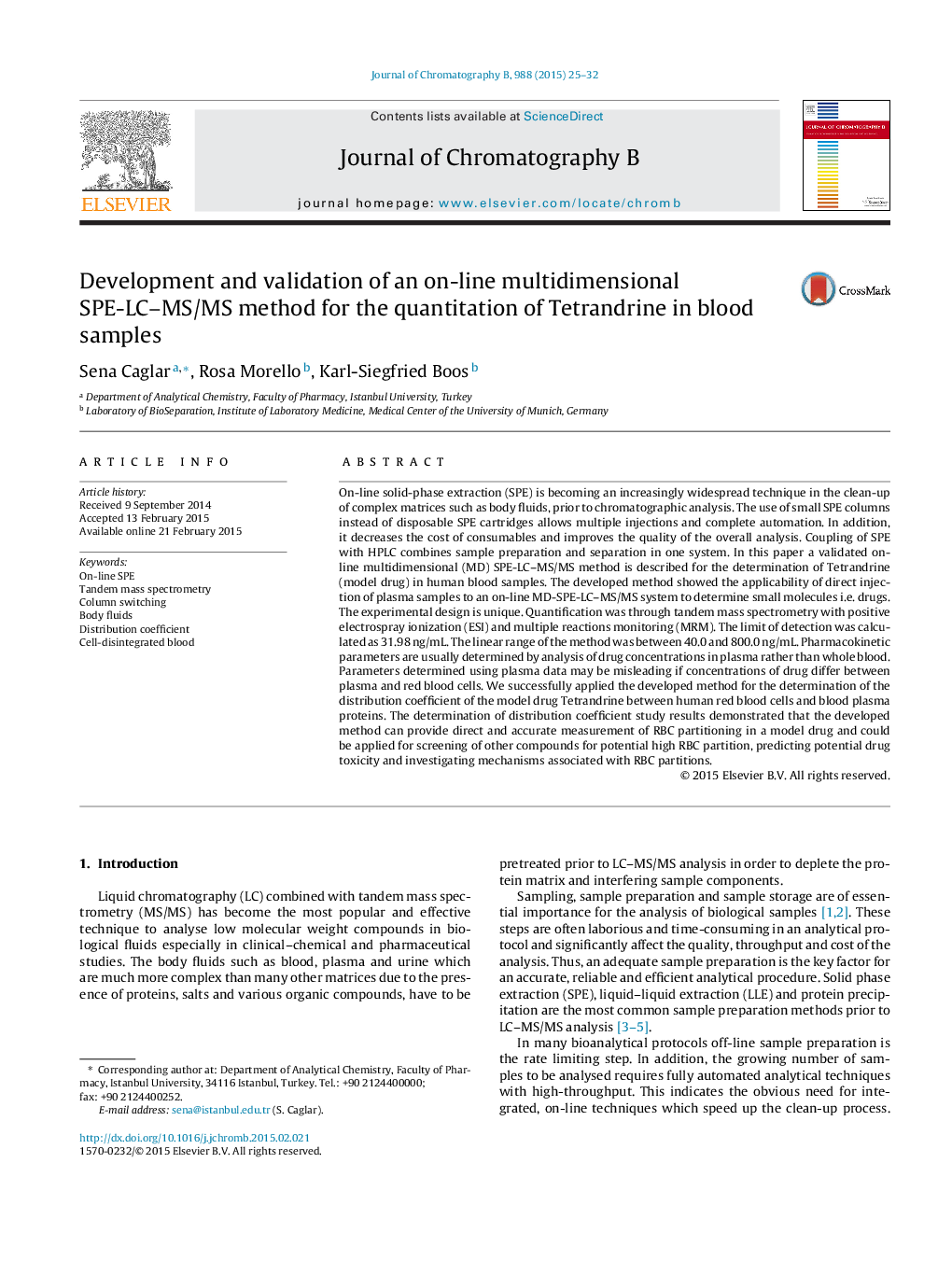| Article ID | Journal | Published Year | Pages | File Type |
|---|---|---|---|---|
| 1213043 | Journal of Chromatography B | 2015 | 8 Pages |
•One of the very few studies in the literature for on-line MD-SPE-LC separations.•First report for the determination of Tetrandrine in human plasma by an on-line SPE-LC–MS/MS method.•A validated on-line multidimensional (MD) SPE-LC–MS/MS method.•Determination of the distribution coefficient between human red blood cells and blood plasma proteins.
On-line solid-phase extraction (SPE) is becoming an increasingly widespread technique in the clean-up of complex matrices such as body fluids, prior to chromatographic analysis. The use of small SPE columns instead of disposable SPE cartridges allows multiple injections and complete automation. In addition, it decreases the cost of consumables and improves the quality of the overall analysis. Coupling of SPE with HPLC combines sample preparation and separation in one system. In this paper a validated on-line multidimensional (MD) SPE-LC–MS/MS method is described for the determination of Tetrandrine (model drug) in human blood samples. The developed method showed the applicability of direct injection of plasma samples to an on-line MD-SPE-LC–MS/MS system to determine small molecules i.e. drugs. The experimental design is unique. Quantification was through tandem mass spectrometry with positive electrospray ionization (ESI) and multiple reactions monitoring (MRM). The limit of detection was calculated as 31.98 ng/mL. The linear range of the method was between 40.0 and 800.0 ng/mL. Pharmacokinetic parameters are usually determined by analysis of drug concentrations in plasma rather than whole blood. Parameters determined using plasma data may be misleading if concentrations of drug differ between plasma and red blood cells. We successfully applied the developed method for the determination of the distribution coefficient of the model drug Tetrandrine between human red blood cells and blood plasma proteins. The determination of distribution coefficient study results demonstrated that the developed method can provide direct and accurate measurement of RBC partitioning in a model drug and could be applied for screening of other compounds for potential high RBC partition, predicting potential drug toxicity and investigating mechanisms associated with RBC partitions.
